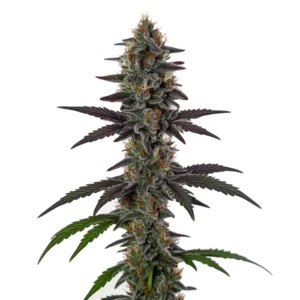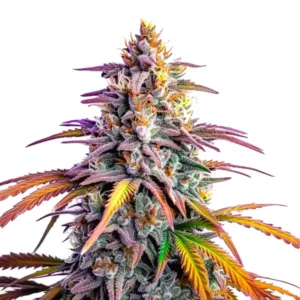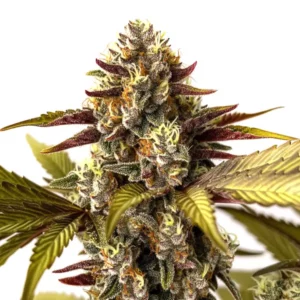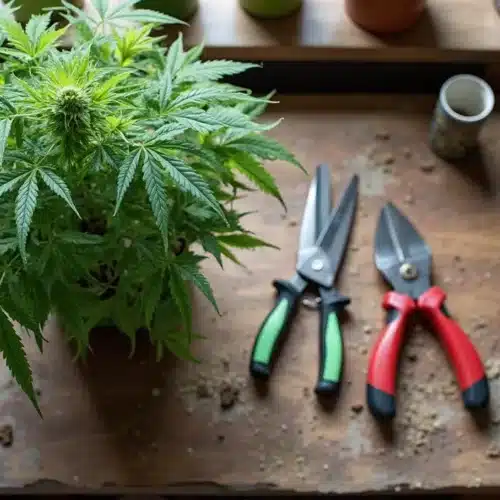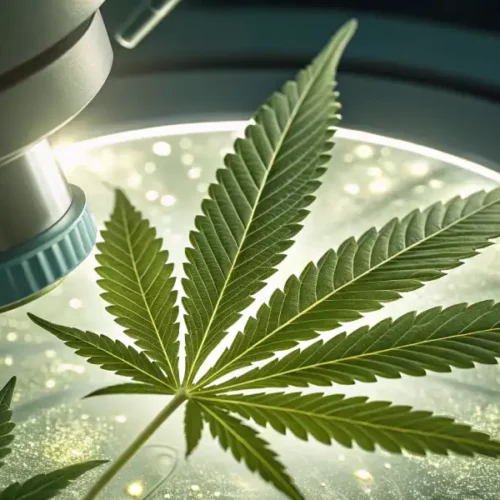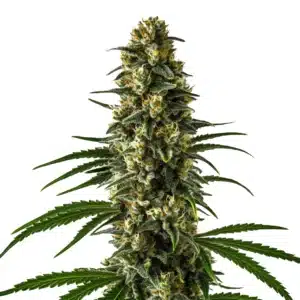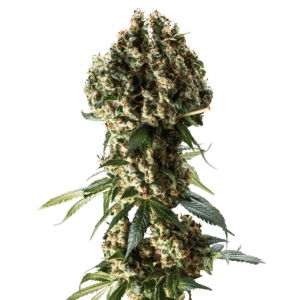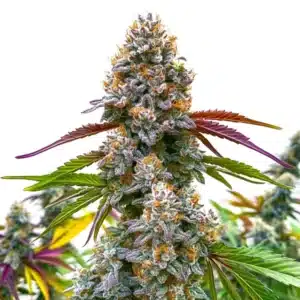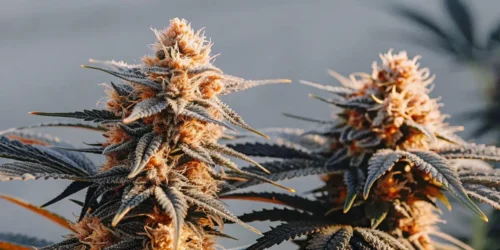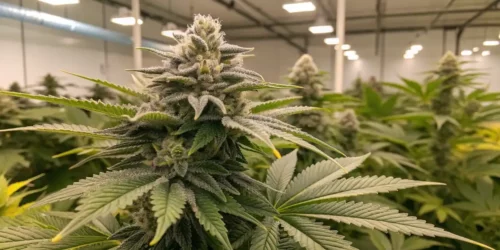Before identifying signs of magnesium deficiency in cannabis plants, it’s important to recognize how this nutrient supports their growth. Magnesium plays a key part in photosynthesis, so without it, the plant lacks the energy needed to thrive.
As a secondary nutrient, magnesium is the main component of chlorophyll, which gives plants their green color and aids in photosynthesis. Additionally, magnesium activates enzymes vital for respiration and other important plant functions. It is also necessary for the breakdown of carbohydrates and the formation of proteins. Furthermore, without sufficient magnesium, cannabis plants struggle to absorb phosphorus, a primary nutrient. Magnesium deficiency can hinder the plant’s ability to perform basic functions, resulting in weakness and stunted growth.
Magnesium: A Vital Secondary Macronutrient for Cannabis
When it comes to cannabis cultivation, knowing the nutrient requirements is essential for achieving optimal growth. Nutrients are typically categorized as either “macro” or “micro” based on their importance to plant health. Historically, nitrogen, phosphorus, and potassium were recognized as the primary macronutrients essential for plant survival. On the other hand, nutrients like magnesium, calcium, and sulfur were often classified as micronutrients.
However, current research has shifted this perspective. Plants, much like humans, thrive when provided with a balanced array of nutrients. This holistic view has led to the reclassification of magnesium as a secondary macronutrient, alongside sulfur and calcium.

Promos & Deals
Magnesium Importance in Cannabis Plants
Magnesium plays several critical roles in the health and growth of cannabis plants, including:
- Chlorophyll Formation: Magnesium is essential for the formation of chlorophyll, the pigment necessary for photosynthesis.
- Nutrient Transport and Metabolism: It supports the transport and metabolism of other vital nutrients, especially phosphorus.
- Protein Formation: Magnesium promotes the formation of essential plant proteins.
- Nucleic Acid Synthesis: It is vital for the synthesis of nucleic acids, which are crucial for cell growth and differentiation.
- Stomatal Regulation: Magnesium regulates the proper formation of stomata, which are responsible for gas and water exchange between the plant and its environment.
- Enzyme Regulation: It is involved in the regulation of multiple plant enzymes.
Signs & Symptoms of Cannabis Magnesium Deficiency
Diagnosing deficiencies in cannabis based solely on leaf appearance can be challenging. However, the following signs may indicate a calcium deficiency:
Interveinal Chlorosis
Interveinal chlorosis, a clear indicator of cannabis magnesium deficiency, results from reduced chlorophyll production and activity. This condition manifests as yellowing of the leaf tissue between veins. In cannabis plants, interveinal chlorosis is easily identifiable—it begins from the inside of a leaf or leaflets and gradually spreads outward, unlike other types of chlorosis that start at the leaf edges.
Brown Spots
When cannabis plants suffer from magnesium deficiency, dark or reddish spots often appear on the leaves. These spots result from further chlorophyll degradation and the redistribution of magnesium from older leaves to newer growth. Magnesium, being a mobile nutrient, can be relocated within the plant. Therefore, when there is insufficient magnesium from the environment, cannabis plants draw on the magnesium stored in their older leaves to support new growth.
Red Stems
Red or purple stems and branches in cannabis plants can sometimes be due to genetic factors. However, they can also signify a magnesium deficiency. Discoloration of petioles (the small stalks that connect a leaf to a branch) is frequently associated with a lack of magnesium.
Fading, Yellowing, and Curling Leaves
Progressive magnesium deficiencies lead to leaves losing their vibrant green color. Affected leaves will eventually turn yellow and fall off the plant. This is primarily due to chlorophyll loss caused by magnesium deficiency. Curling leaves with interveinal chlorosis or faded colors are also common signs of advanced magnesium deficiency in cannabis plants.
Leaf Necrosis
Necrosis refers to the death of cells. Leaf necrosis, therefore, indicates cell death in a plant’s leaves and is a common sign of advancing magnesium deficiency. Magnesium is crucial for the proper growth, development, and differentiation of plant cells. When magnesium is severely lacking, the cells in a cannabis plant’s leaves may start to die, causing the leaves to wither. Leaf necrosis from magnesium deficiency typically affects older leaves first, but severe deficiencies may also impact young leaves.
Poor Bud Development
Severe nutrient deficiencies during the flowering phase of a cannabis plant’s life are highly undesirable. While magnesium isn’t essential for flower development, a lack of magnesium can still affect the flowering process. Symptoms of magnesium deficiency may worsen as a plant begins to flower, leading to airy and possibly discolored buds.
By recognizing these specific signs of cannabis magnesium deficiency, growers can take timely corrective measures to maintain the health and productivity of their plants.

Causes of Magnesium Deficiency in Cannabis Plants
Magnesium deficiency in cannabis plants can arise from several factors:
- Poor Soil Composition: A primary cause is the lack of magnesium in the plant’s soil or growing medium. This often results from the absence of magnesium-rich organic matter in the soil purchased or prepared. Additionally, fertilizers used might not contain sufficient magnesium.
- Improper pH Levels: The pH level is crucial for cannabis plants to absorb nutrients from the soil. Acidic conditions, in particular, can hinder the plant’s ability to uptake magnesium.
- Overwatering and Poor Drainage: Excessive watering or inadequate drainage creates an unfavorable environment for the roots, impairing their ability to absorb nutrients, including magnesium.
- Using Hard Water: Hard water, which has high mineral content, can disrupt nutrient absorption. In the context of cannabis cultivation, hard water (over 120mg/l or 120ppm in the US) can supply excess minerals, interfering with nutrient uptake. It’s recommended to use soft water for cannabis to avoid such issues.
- Nutrient Leaching: Heavy watering or exposure to heavy rain can cause nutrients to leach from the soil. Overwatering, in particular, can lead to magnesium being washed away, resulting in a deficiency.
How to Prevent Cannabis Magnesium Deficiency
Preventing a cannabis magnesium deficiency is essential and more effective than treating it after the fact. To achieve this, start with a feed that contains the appropriate amount of magnesium. Since magnesium is a vital nutrient, many quality cannabis feeds include it. However, not all feeds do, so it’s important to check the contents before purchasing. If your feed lacks adequate calcium, you can supplement with dolomite lime or CalMag to provide both elements.
In addition to providing enough magnesium, ensure the environment is conducive to its absorption. Water your plants sufficiently, but avoid overwatering to prevent magnesium from leaching out of the soil.
Moreover, maintain the proper pH levels: 6.0–7.0 in soil and 5.5–6.5 in hydroponic systems. Correct pH levels will enable the roots to effectively absorb magnesium and other essential nutrients.
How to Treat Magnesium Deficiency in Cannabis
To effectively treat magnesium deficiency in cannabis, follow these comprehensive steps: identify the root cause, correct it, and nurse your plants back to health.
1. Review Your Water Supply
If your water’s pH is incorrect or too hard, consider switching to cleaner sources such as rainwater or AC runoff.
2. Give Your Plants Magnesium Using a Foliar Spray
Address the magnesium deficiency directly by using a foliar spray. This method allows plants to absorb magnesium quickly through their leaves.
3. Amend Your Soil
For soil-grown cannabis, preparing your own nutrient-rich super soil can help provide consistent nutrition. Improve your soil’s magnesium absorption by:
- Using perlite and vermiculite for better drainage.
- Adding organic matter like worm castings, compost, dolomite lime, and bat guano.
4. Prune Away Affected Leaves
Finally, remove leaves damaged by the magnesium deficiency. This helps your cannabis plants conserve energy and focus on producing new, healthy foliage.
By following these steps, you can effectively treat and prevent magnesium deficiency in your cannabis plants, ensuring they remain healthy and productive.
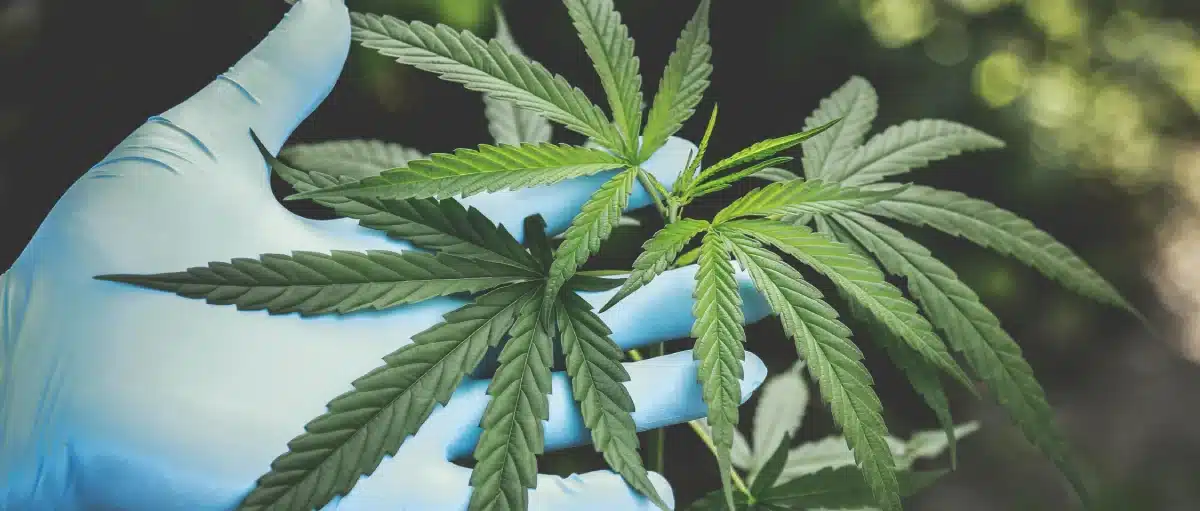
Excess Magnesium (Mg) in Cannabis Plants
An excess of magnesium in cannabis plants can lead to several issues, including poor growth, dark green leaves, and brown spots on the edges. Moreover, it can hinder the plant’s ability to absorb other essential nutrients, causing secondary deficiencies.
To resolve this, it is crucial to balance the soil pH and adjust fertilization levels to lower magnesium concentration. Using purified or rainwater along with enzymes can help remove excess nutrients from the soil.
How to Quickly Detect Excess Magnesium in Cannabis Plants?
Detecting excess magnesium can be challenging, as it is uncommon when using substrates suitable for growing marijuana. Magnesium ions can interfere with calcium ions, leading to calcium deficiency symptoms. If there is an excess of magnesium, perform a root flush by applying water at least three times the pot’s capacity and then water with a balanced fertilizer.

3 incredible genetics to grow: Avoid magnesium deficiency.
Now we will see 3 different genetics that you can grow at home since you can find the seeds here at Blimburnseeds.com. Buy them now! You will fall in love with these genetics because they deliver incredible plants. Be careful and avoid a magnesium deficiency when growing these weed varieties. Follow the advice of our guide and you will avoid any problem.
Grape Gas
Grape Gas is a hybrid cannabis strain resulting from the cross between Cherry Pie and Grape Stomper. With a terpene profile dominated by Myrcene, Caryophyllene, and the rare trans-Ocimene, this strain offers a rich and complex sensory experience, both in flavor and therapeutic effects. It is known for its earthy, herbal flavor with diesel undertones, complemented by a sweet berry finish reminiscent of grapes and cherries.
Grape Gas delights the senses with its unique combination of flavors and aromas. Upon inhaling, earthy and herbal notes with a hint of diesel are perceived, which soon blend into a sweet, fruity taste of grapes and cherries upon exhaling. This balanced mix makes consuming Grape Gas a pleasurable experience for both cannabis enthusiasts and medicinal users.
With a THC content ranging from 15% to 24%, Grape Gas is a potent strain that offers pronounced and long-lasting effects. Users can expect a robust experience that begins with cerebral euphoria and gradually transforms into deep body relaxation, making it a potential remedy for cannabis magnesium deficiency symptoms.
Cafe Racer Auto
Introducing the Cafe Racer Auto cannabis seeds, our latest sensation! Get ready for an exhilarating experience with this blend of premium strains, including Purple Punch, Clementine, and Ruderalis. With an impressive 19%-24% THC content and low CBD, Cafe Racer Auto is celebrated for delivering a potent and unforgettable high. This strain promises a joyful and energizing experience that will leave you buzzing. So buckle up and prepare for a trip filled with joy and delight!
But that’s not all—Cafe Racer Auto will elevate your mood to new heights. As this strain brings out your sociable side, you’ll find yourself laughing and smiling more than usual, becoming the life of any social gathering. Get ready for a smooth transition into relaxation as you ride the waves of bliss. Cafe Racer Auto can calm you down and induce a delightful tranquility. Its soothing presence will gradually lead you into a serene state where all your worries will disappear.
Now, let’s talk flavor. Cafe Racer Auto rich terpene profile tantalizes your taste buds. An aromatic symphony of humulene, ocimene, delta-3 carene, camphene, and linalool will keep you coming back for more. If you are experiencing cannabis magnesium deficiency, Cafe Racer Auto robust genetic makeup and high-quality strains might provide the boost you need.
RS54 Cannabis Extraction
RS54 Cannabis Extraction is the result of crossing RS54 with Permanent Maker. The appearance of RS54 Cannabis Extraction is truly spectacular, with dense buds covered in trichomes that sparkle like a disco ball. The vibrant colors of the buds resemble a rainbow sorbet, featuring shades of green, purple, and orange that captivate the eye.
The aroma of RS54 Cannabis Extraction is equally impressive, blending sweet and fruity notes with a hint of gasoline, giving it a complex and highly appealing aromatic profile. This balance of sweetness and pungency is a distinctive characteristic that sets it apart from other strains.
With a high THC content, RS54 Cannabis Extraction is a potent strain that offers an euphoric and energetic experience, making it ideal for social and festive situations. The initial effects typically include a quick cerebral high that boosts mood and stimulates creativity, followed by a body relaxation that is not sedative, allowing for enjoyment of activities without feeling heavy or lethargic.
This combination of effects makes RS54 Cannabis Extraction an excellent choice for those seeking a strain that provides both mental stimulation and physical relaxation, perfect for social events, parties, or simply having a good time with friends. If you are concerned about cannabis magnesium deficiency, RS54 Cannabis Extraction may be a strain worth considering due to its balanced profile and impressive characteristics.
Magnesium FAQ!
How long does it take to correct a magnesium deficiency in cannabis?
Si vous utilisez davantage de calcium pour vos plants de cannabis et corrigez le pH en conséquence, vous verrez la plante récupérer en quelques semaines. L’important est d’utiliser la méthode et d’appliquer toutes les solutions dont vous avez besoin et les plantes se rétabliront petit à petit.
How quickly can you reverse magnesium deficiency?
Chronic magnesium deficiency is frequently linked to normal levels of magnesium in the bloodstream, despite deficiencies in cells and bones. Oral supplementation typically results in a gradual response, sometimes requiring up to 40 weeks to achieve a consistent state.
How do you know if your cannabis plant has a magnesium deficiency?
Symptoms of magnesium deficiency manifest as interveinal yellowing on the leaves, distinct from the general yellowing seen with nitrogen deficiencies. Middle-aged leaves show small rusty brown spots or cloudy yellow flecks.

